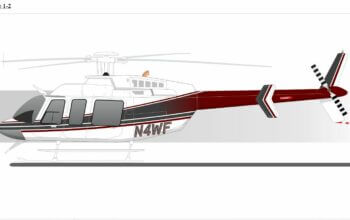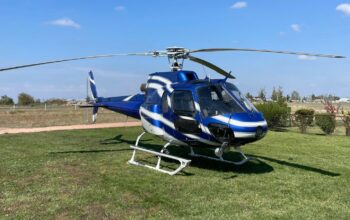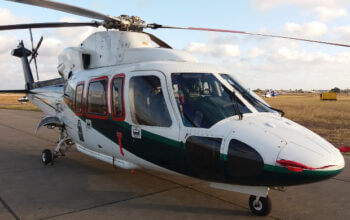Uber has signed a second Space Act Agreement with NASA to explore concepts and technologies for urban air mobility (UAM). Under this agreement, Uber will share its unique UAM requirements based on their future operational concept for the world’s first urban aviation’s rideshare network, and NASA will use the latest airspace management modeling and simulation algorithms to assess the impacts of integrating UAM operations in an urban environment.
This is NASA’s first such agreement specifically focused on modeling and simulation for UAM operations. The agreement was announced at the second Uber Elevate Summit in Los Angeles.
Last year, Uber signed a Space Act Agreement with NASA focused on the development of new unmanned traffic management concepts for unmanned aerial systems. Today’s agreement represents another step in the partnership between Uber and NASA on urban aviation.
Urban air mobility is defined as a safe and efficient system for passenger and cargo air transportation within an urban area (operations over populated areas). At its Elevate Summit, Uber released a new uberAIR model for transporting passengers in an urban aviation rideshare network.
Using data from Uber, NASA will use its research facility at the Dallas-Fort Worth (DFW) airport to simulate a small passenger carrying aircraft as it flies through DFW airspace during peak scheduled air traffic, and analyze if these operations would trigger traffic collision advisories.
NASA researchers also will study potential operational safety issues that could develop as UAM new vehicles take to the air in an already crowded air traffic control system. Uber has previously announced that Dallas-Fort Worth will be one of the first cities in the U.S. to have an urban aviation rideshare network with goals of flight demonstration in 2020 and commercial operations in 2023.
“NASA is excited to be partnering with Uber and others in the community to identify the key challenges facing the UAM market, and explore necessary research, development and testing requirements to address those challenges,” said Jaiwon Shin, associate administrator for NASA’s Aeronautics Research Mission Directorate. “Urban air mobility could revolutionize the way people and cargo move in our cities and fundamentally change our lifestyle much like smart phones have.”
“The new Space Act agreement broadening Uber’s partnership with NASA is exciting, because it allows us to combine Uber’s massive-scale engineering expertise with NASA’s decades of subject matter experience across multiple domains that are key to enabling urban air mobility, starting with airspace systems,” said Jeff Holden, Uber’s chief product officer.
NASA UAM research will assess feasibility of UAM operations, and identify requirements to ensure the system operates with the highest safety standards, acceptable levels of noise, and with airspace access that doesn’t burden the current national air traffic control system. NASA’s UAM initiative will leverage ongoing agency research activities to include unmanned aircraft systems (UAS) traffic management at low altitude, UAS integration in the National Airspace System, all electric general aviation class aircraft development (X-57 Maxwell), vertical takeoff and landing, system wide safety, and several others.
These activities will generate the data necessary to support the creation of industry standards, Federal Aviation Administration (FAA) rules and procedures, and other regulations. As with all federal-funded research, NASA will make this research available to the broader UAM community.
Last year, Uber announced the first U.S. Elevate cities would be Dallas-Fort Worth/Frisco Texas and Los Angeles, with a goal of flight demonstrations in 2020 and Elevate commercially available to riders in 2023 in those cities.
To make uberAIR a reality, Uber has entered into partnerships with several highly experienced aircraft manufacturers who are developing electric VTOL vehicles including: Aurora Flight Sciences (now a subsidiary of Boeing), Pipistrel Aircraft, Embraer and Bell.
Uber’s design model specifies that this fully electric vehicle have a cruising speed between 150 to 200 miles per hour, a cruising altitude of 1,000 to 2,000 feet and be able to do trips of up to 60 miles on a single charge.
Last fall, Uber signed a space act agreement with NASA for the development of new unmanned traffic management concepts and unmanned aerial systems that will enable safe and efficient operations at low altitudes. To help create skyports for the uberAIR network, Uber has also entered into real estate partnerships with Hillwood Properties and Sandstone Properties.









